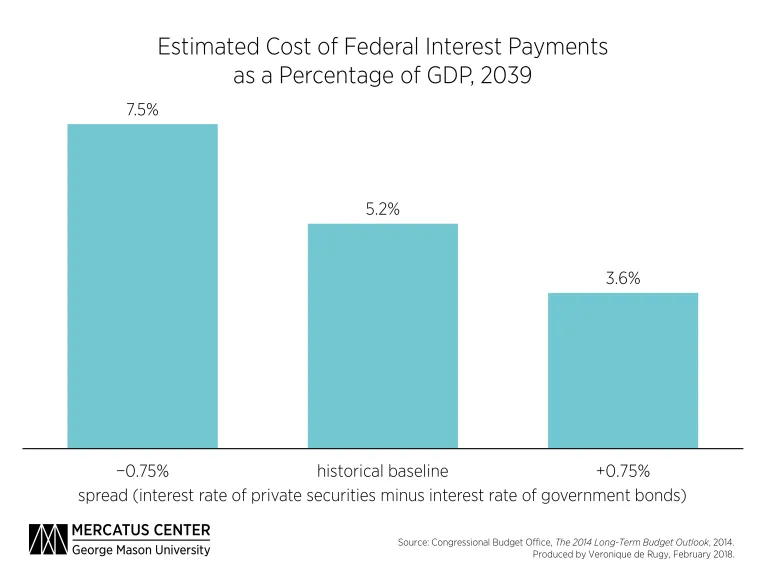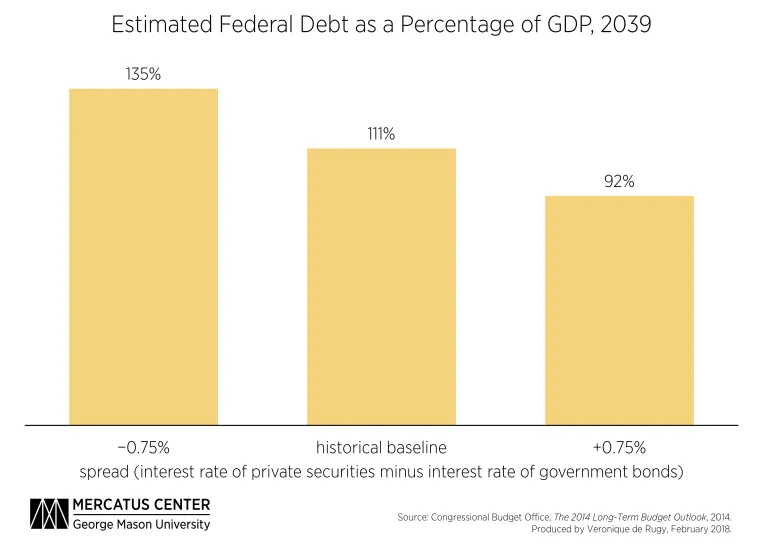- | Government Spending Government Spending
- | Data Visualizations Data Visualizations
- |
Rising Interest Rates Would Explode the Federal Debt
Large deficits require higher interest rates to finance, driving future spending up.
As the federal government prepares its budget for the new year, it will need to yet again fund its deficit spending. The Treasury does this by issuing bonds to the public. Because Treasury bonds are considered safe investments, the interest rate is typically lower than that of private-sector securities. The difference between the interest rates of private securities and Treasury bonds is referred to as a “spread.” A higher spread means lower interest rates from federal Treasury bonds as compared to private securities.
In 2014, the Congressional Budget Office (CBO) estimated how big the spread would be for bonds paid by 2039 and calculated how the federal budget would be affected by a spread that tracks the historical baseline, one that is 0.75 percent greater than the baseline, and one that is 0.75 percent smaller. CBO’s baseline estimate for the cost of interest payments on federal debt is 5.2 percent of GDP in 2039. An increase in the spread would lower these payments, while a decrease would raise the portion of GDP required to be paid.



